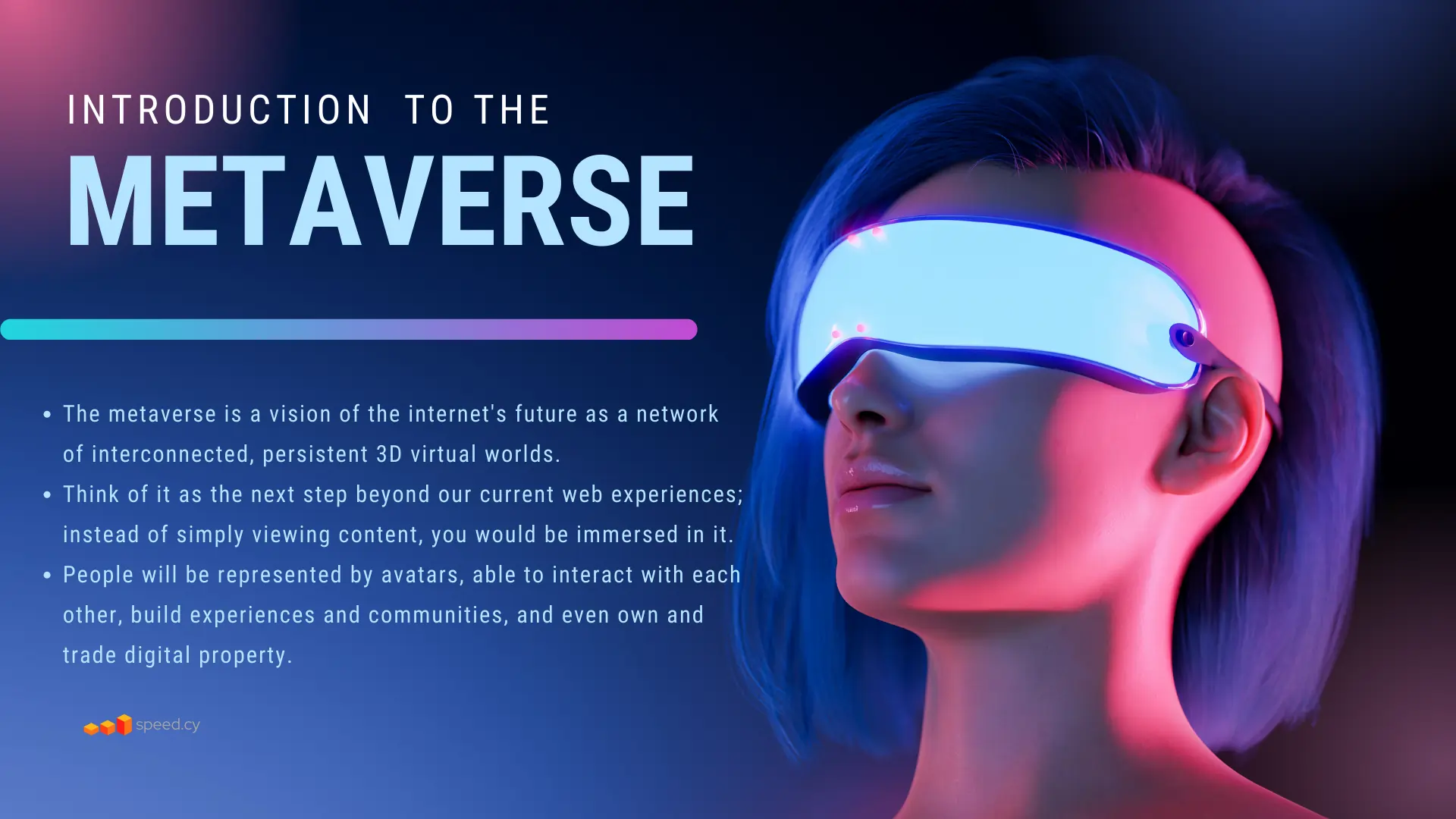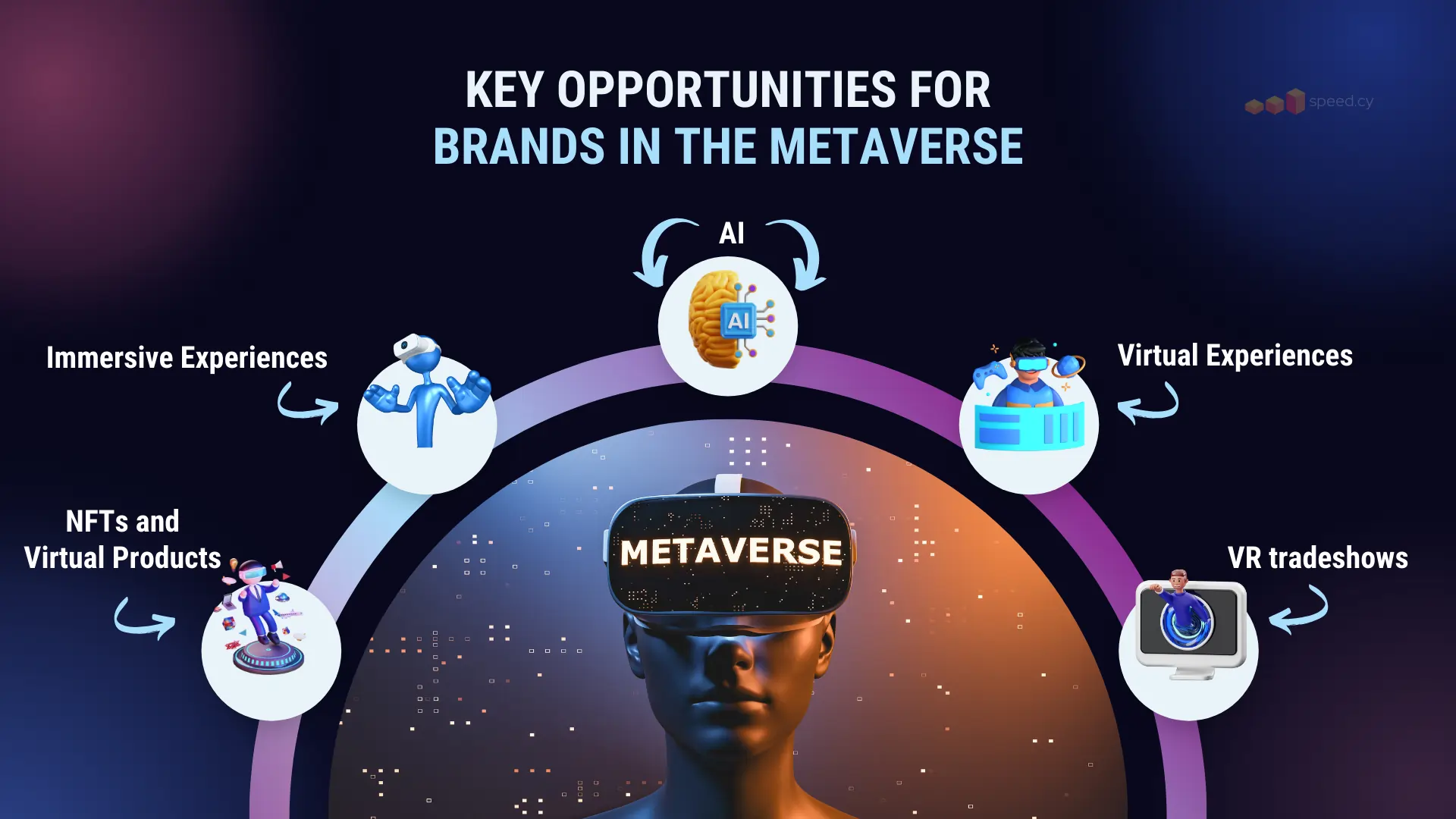The metaverse is rapidly emerging as the next evolution of the internet, offering brands new opportunities to engage audiences in immersive and interactive ways. As consumers spend more time in metaverse environments like Decentraland, The Sandbox, and Roblox, savvy brands are developing metaverse strategies to meet audiences where they are most active.
But what exactly is the metaverse, and how can brands capitalize on these new virtual worlds? Here we break down the strategic opportunities for brands in the metaverse and provide proven advice for developing an effective metaverse strategy.
An Introduction to the Metaverse Trend
The term “metaverse” refers to persistent 3D virtual worlds where users can explore digital landscapes, interact with each other through avatars, and participate in experiences spanning gaming, social media, entertainment and more. While still in early stages, the meta-verse aims to integrate multiple aspects of online life into interconnected virtual spaces.
Major tech companies like Meta (formerly Facebook), Microsoft, and Epic Games are investing billions into building open, interoperable metaverse platforms. Consumer brands want in on the action too. Research shows 71% of consumers are interested in exploring brand interactions in the metaverse. (Source)
For brands, the metaverse unlocks new channels for engaging audiences with immersive storytelling, branded virtual events, digital products, and experiential marketing. Just as brands migrated to social media and ecommerce years ago, early brand activation in the metaverse can help secure mindshare with future consumers.

Overview of Major Metaverse Platforms and Audiences
While there is no singular “metaverse” yet, several platforms show promise in attracting brands and users:
- Decentraland – Browser-based virtual world where users buy digital real estate and create experiences. Attracts crypto enthusiasts.
- The Sandbox – Gaming-focused meta-verse with a voxel art style. Popular with gamers.
- Roblox – Massive gaming platform with 43 million daily users. Popular with under 13 crowd. (Source)
- Meta Horizon Worlds – Social VR playground still in beta. Will integrate with Facebook, Instagram and other Meta apps.
The metaverse demographic skews young and tech savvy for now. However, as VR devices improve and platforms evolve, mass consumer adoption is expected within 5-10 years.
Brands evaluating meta-verse platforms should consider factors like audience reach, creation tools, commercial opportunities, and technical requirements. Selecting platforms aligned to brand goals and target users is key.
Key Opportunities for Brands in the Metaverse
Brands are just starting to explore how virtual worlds can drive business value. Early experimentation has revealed some of the most promising opportunities:
Immersive Experiences and Virtual Events
Virtual spaces allow brands to create events and experiences that go beyond what’s possible physically. For example, in Decentraland, Gucci developed a virtual garden that changes with the seasons. Nike acquired virtual sneakers company RTFKT and is creating gamified worlds to launch digital sneakers. Such experiences foster deeper engagement with brands.
The metaverse also enables new event formats like virtual product launches, hybrid digital/physical concerts, VR tradeshows, and exclusive gatherings for loyalty program members. Expect more brands to host interactive virtual events as an alternative or complement to in-person experiences.
New Marketing Opportunities with NFTs and Virtual Products
Non-fungible tokens (NFTs) and virtual goods offer brands new ways to engage audiences. From collectible digital sneakers to fashion pieces for avatars, virtual products present monetization potential.
For example, Dolce and Gabbana created a nine-piece NFT collection that sold for $6 million (Source). CPG brands could offer limited edition digital mascotcharacters or virtual food products for avatars. As users personalize digital identities, branded virtual goods can show affiliation.
Integrating Real World and Virtual Experiences
Linking real world and virtual activations can merge physical and digital engagement. For instance, Coca-Cola launched their virtual Music Hall in Fortnite, displaying artist profiles of physical musicians playing concerts in real life (Source). Fashion label Clinique offered virtual makeovers in Decentraland using products from physical stores (Source).
Such initiatives build consistent brand experiences across channels. Real world rewards or access can drive participation in virtual events, while digital extensions give physical touchpoints longer shelf life. Omnichannel strategies will be key in the metaverse.

Developing a Winning Metaverse Strategy
While the metaverse presents intriguing potential for brands, it requires careful planning and strategic investment to generate real value. Follow these best practices when developing your meta-verse activities:
Select the Right Platforms and Audiences
As outlined earlier, top metaverse platforms attract different users today. Decentraland skews crypto/investor profiles, The Sandbox gaming enthusiasts, Roblox kids. Not all brands belong in all worlds. Prioritize 1-2 platforms where your audience is active and your brand resonates.
Set Goals and Success Metrics
Have a clear vision of what you want to achieve in the meta-verse. Potential goals include brand awareness, engagement, community building, lead generation, and sales of virtual goods. Define metrics to track performance for optimization. Measure beyond vanity metrics like visitors or impressions to conversion actions.
Budget and Resourcing Considerations
The metaverse demands new design skills and technology investments that traditional agencies may lack. Brands need 3D designers, gaming developers, VR experts and blockchain technologists on their rosters. Plan for a 6-12 month ramp up to find the right partners and build internal capabilities.
Metaverse initiatives can cost from tens of thousands to millions based on complexity. Start with small tests before committing major spends until you validate your strategy. Invest early while costs are lower to gain first mover advantage.

Executing and Measuring Your Metaverse Strategy
An adaptable approach is key to metaverse success. Follow agile principles of launching small tests, analyzing data, learning and improving:
Start with Pilots and Experiments
Given the nascency of the meta-verse, brands should embrace a “test and learn” mindset. Start with low risk initiatives like designing branded wearables for avatars or creating a simple branded space. Measure adoption and feedback before investing in larger domains or experiences.
Analyze Performance Data and User Feedback
Collect data and observe how users interact with your brand in the metaverse. Are they spending meaningful time exploring? Sharing socially? Buying branded virtual goods? Feedback surveys can also reveal what resonates.
Optimize and Evolve Your Strategy
Use insights uncovered from tests to refine your strategy over successive iterations. Expand on elements that work well and course correct those that fall flat. The metaverse rewards persistent brands who iterate to meet evolving user needs.
Metaverse Strategy Examples from Early Brand Activators
While still early days, some influential brands offer inspiration:
- Nike – Acquired RTFKT to create virtual sneakers for the meta-verse. Also opened Nikeland in Roblox to showcase products in an interactive world (Source).
- Gucci – Created the Gucci Garden space in Roblox for customers to interact with limited edition digital designs (Source).
- Adidas – Bought virtual real estate in The Sandbox metaverse to engage gamers and build branded experiences (Source).
- Wendy’s – Launched a virtual restaurant in Horizon Worlds with food deliveries to avatars and conversations with Wendy’s characters (Source).
These early brand activators provide models for thoughtful meta-verse worldbuilding that aligns to their respective brand purposes.
The Future of Brands in the Metaverse
While still nascent today, the metaverse promises to become a ubiquitous platform touching all parts of society in the future. Just as the internet reshaped business models, the metaverse will drive changes in consumer behavior and engagement.
Brands that embrace the meta-verse early have an opportunity to shape its evolution and cement strong positioning before mass adoption. As virtual worlds become more immersive and interconnected, the gap between digital and physical brand experiences will narrow – they will simply become different facets of a holistic brand universe.
The metaverse mandate for marketing leaders is clear: start testing and learning in virtual worlds now so you’re ready to fully engage the next generation of consumers in the decades to come. Brands that lag risk fading into irrelevance. The time to define your brand’s meta-verse strategy is now.
Final Verdict: Prioritize Long-Term Vision Over Short-Term Hype
While the metaverse holds exciting potential as the next evolution of digital experiences, some brands may still be tempted to write it off as mere hype. However, those who look past the buzzwords and fads can unlock real opportunities to forge deeper engagement with future generations of digital-native consumers.
Leading brands are approaching the meta-verse as a long-term investment in their brand futures. By taking small steps today and building capabilities ahead of mass adoption, they are positioning themselves to flourish as virtual worlds become mainstream.
However, the metaverse requires patience and commitment to see returns. Jumping in without clear objectives or half-hearted initiatives will yield little. Brands must filter hype from genuine possibilities and act decisively on the latter.
With prudent strategy, brands who embrace the metaverse today will be ready to reap rewards in the decades ahead. Just as early adopters of past platforms like mobile and social media gained advantage, forward-thinking brands have much to gain by charting their meta-verse course now and optimizing along the journey. The virtual worlds of tomorrow beckon – it’s time to answer the call.





